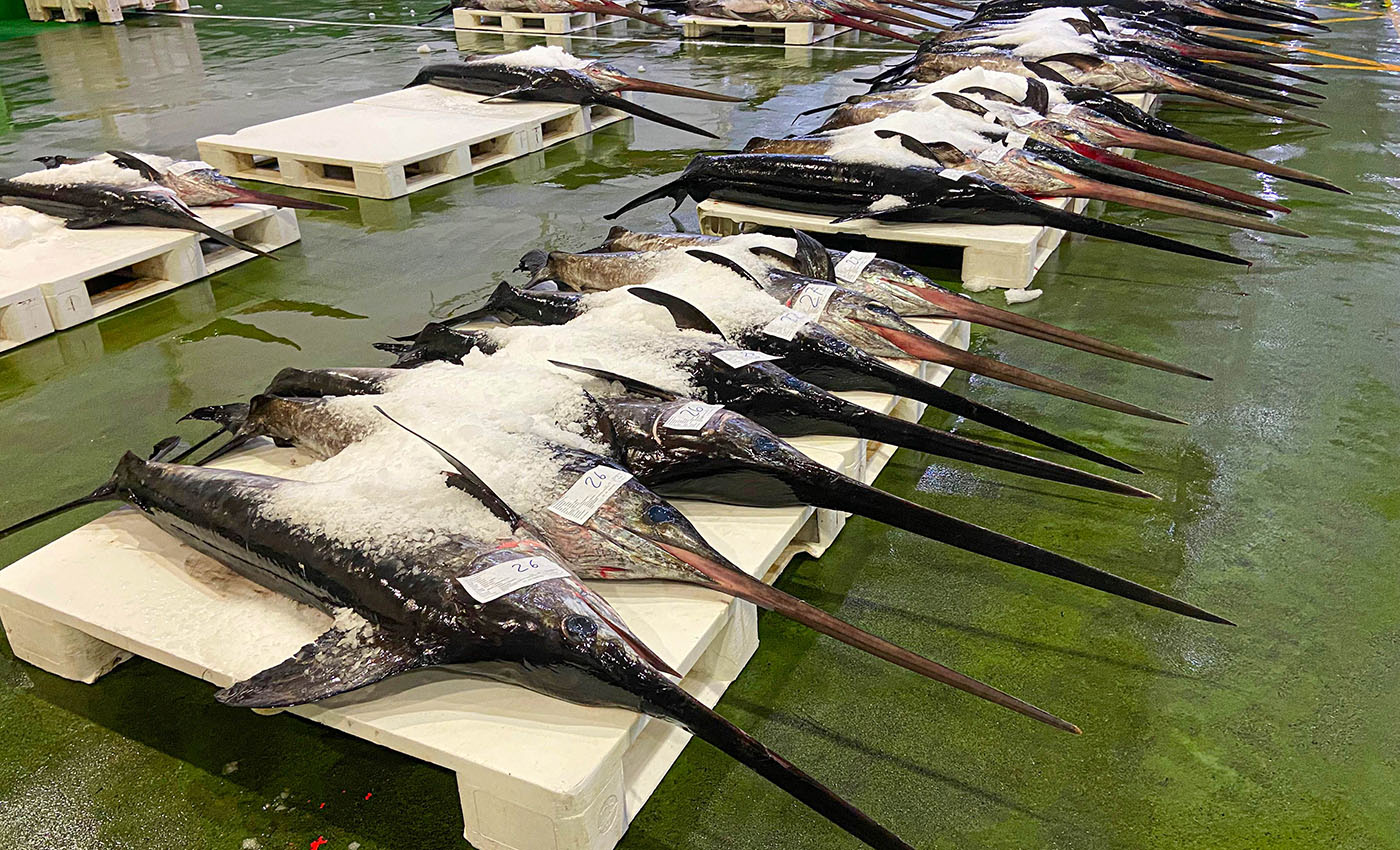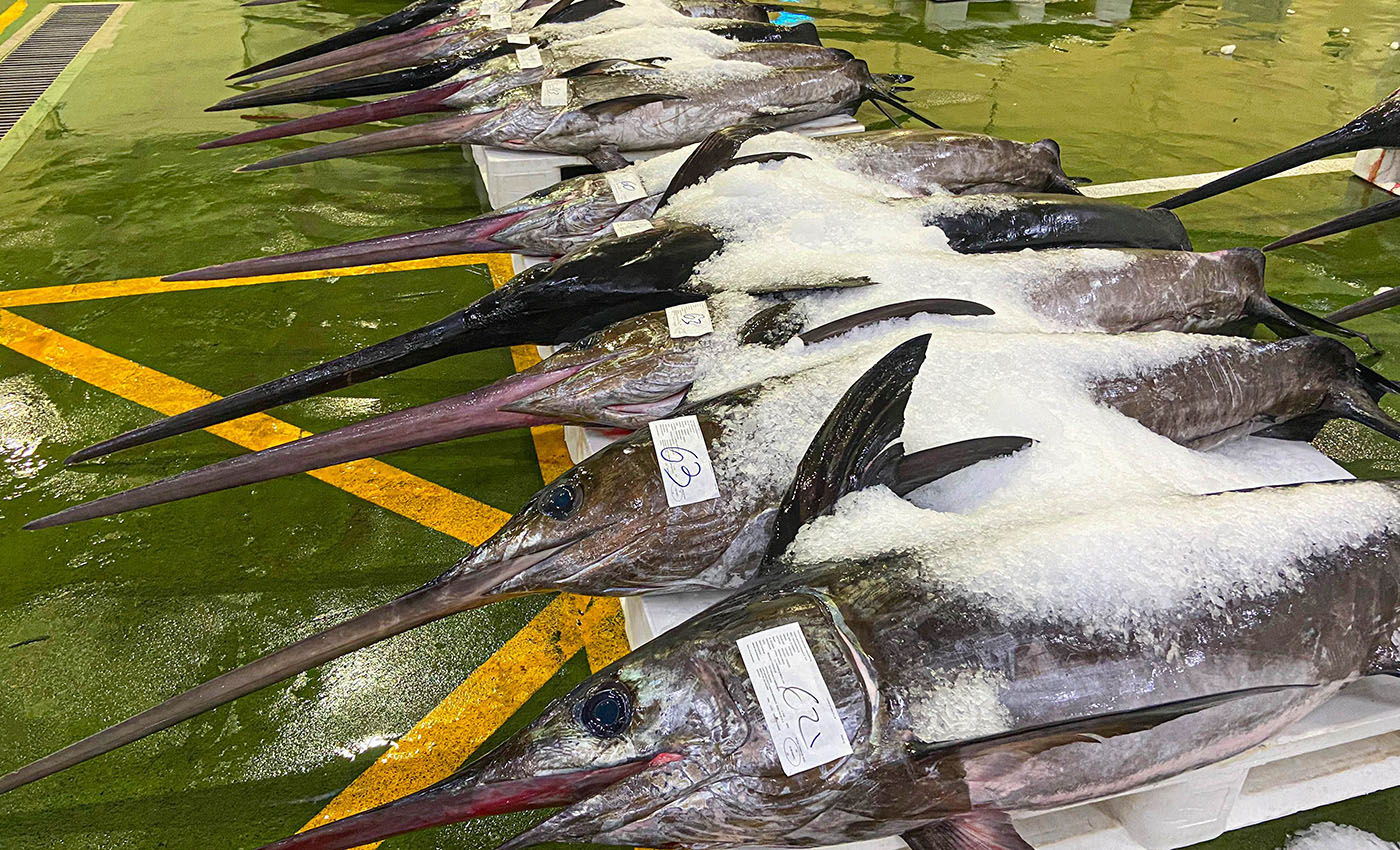Swordfish
The swordfish (formerly, espadón2), emperor or palá needle (in Andalusia) (Xiphias gladius) is a species of perciform fish of the Xiphiidae family.3 They are large, highly migratory predatory fish, characterized by their long, flattened beak, different from that of their relatives, the billfish, which is conical. Swordfish is the only species belonging to the Xiphiidae family, and its fishing is a popular sport. They are stylized and have the characteristic of losing all their teeth and scales in their adult stage. They reach a maximum size of 4.3 m and a weight of 540 kg. The International Game Fish Association record corresponds to a 536 kg specimen caught in 1953 in Iquique, Chile, where it is known as albacore.
On their mouths they carry a movable structure in the shape of a fishing rod, which they wave like a flag simulating a small prey.
Behind the head they have two small fins. The back is greenish brown, almost black; the belly is white and yellowish.






